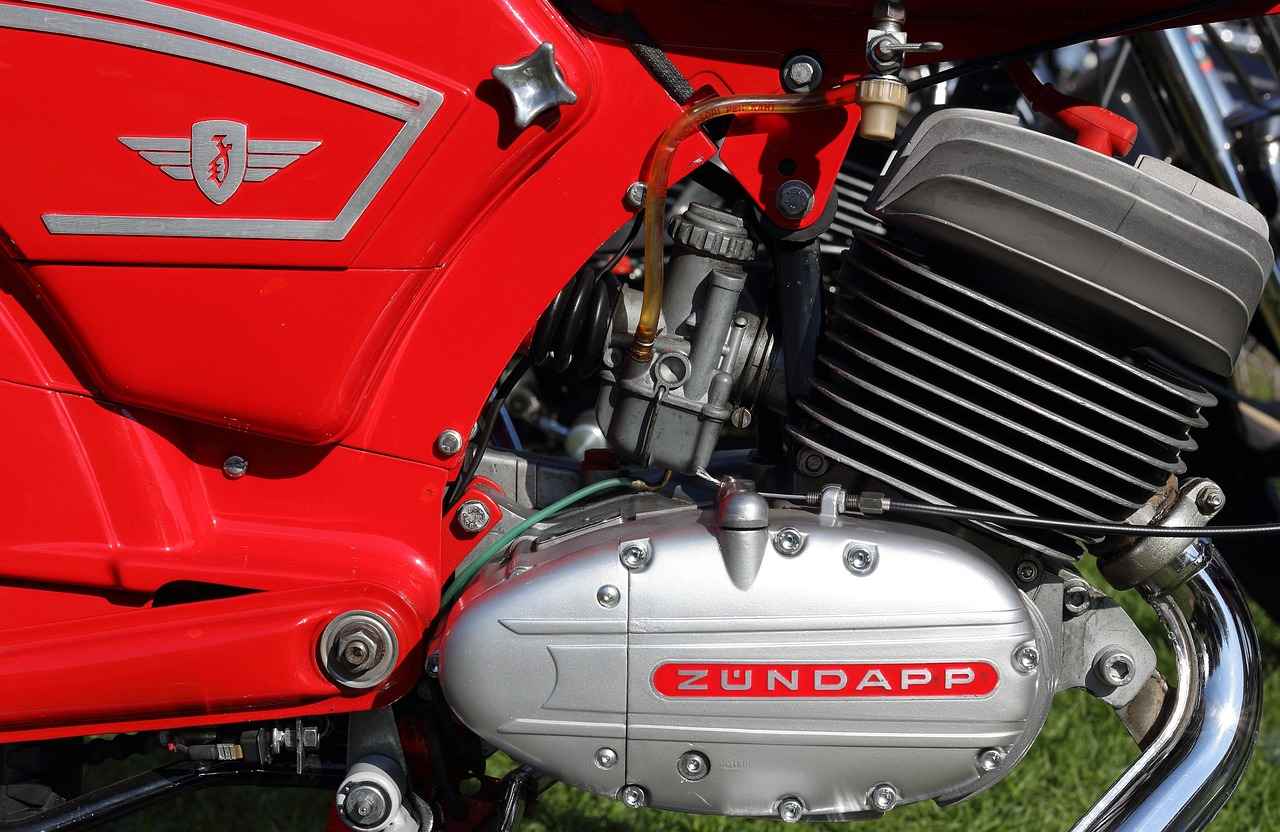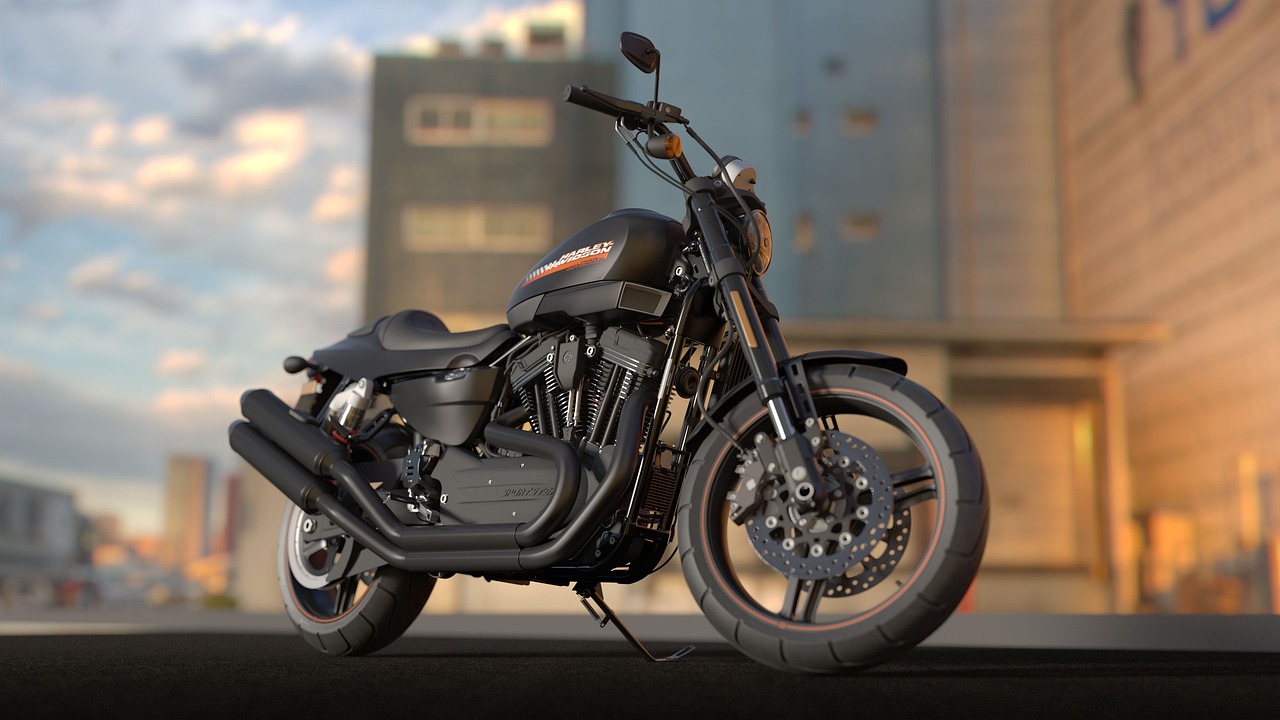The 2017 Honda Accord has established itself as a reliable and popular choice among mid-size sedans. As the automotive market evolves, understanding the current market value of this model is essential for both buyers and sellers. This article delves into the various factors that influence the price of the 2017 Honda Accord, including its condition, mileage, and prevailing market trends.
Several key factors play a significant role in determining the valuation of a 2017 Honda Accord. These include:
- Condition: The overall state of the vehicle, including both mechanical and cosmetic aspects.
- Mileage: The distance the vehicle has traveled, which can indicate wear and tear.
- Market Trends: Current demand for the model and competition from similar vehicles.
Mileage is a critical factor in assessing the worth of a used car. Generally, lower mileage can lead to a higher resale value. For the 2017 Honda Accord, typical mileage ranges from 12,000 to 15,000 miles per year. Therefore, a vehicle with under 60,000 miles is often considered desirable.
Low mileage can significantly enhance a vehicle’s value. For the 2017 Honda Accord, anything below 50,000 miles is typically classified as low mileage, making it more appealing to potential buyers.
Conversely, high mileage can diminish a car’s worth. A 2017 Honda Accord with over 80,000 miles may see a noticeable decrease in its resale price due to potential maintenance concerns.
The overall condition of a vehicle is crucial in its valuation. A well-maintained 2017 Honda Accord will naturally command a higher price than one with visible signs of wear.
Assessing a car’s condition involves evaluating both mechanical and aesthetic aspects. Look for:
- Exterior: Check for dents, scratches, and rust.
- Interior: Inspect for wear and tear on seats and dashboard.
- Mechanical: Ensure regular maintenance records are available.
Certain repairs can either enhance or diminish a vehicle’s value. Significant repairs, such as engine or transmission work, may raise concerns for buyers, while minor fixes like new tires can positively impact resale potential.
The 2017 Honda Accord comes in various trim levels, each with unique features that can influence market value. Higher trims often include more advanced technology and luxury features, making them more appealing.
Some of the most sought-after trim levels for the 2017 Honda Accord include:
- EX-L: Known for its leather interior and additional comfort features.
- Sport: Offers a sportier design and enhanced performance.
- Touring: The top trim with all available features and technology.
Advanced features such as adaptive cruise control, lane-keeping assist, and premium sound systems can significantly enhance a vehicle’s appeal and, consequently, its resale price.
Market demand plays a significant role in determining vehicle prices. As of now, the 2017 Honda Accord remains a popular choice due to its reputation for reliability and fuel efficiency.
Seasonal fluctuations can impact car prices. Typically, demand increases in the spring and summer months, which may elevate prices for the 2017 Honda Accord during these times.
Broader economic conditions, such as interest rates and consumer purchasing power, can influence the valuation of the 2017 Honda Accord. A strong economy often leads to higher demand, thus increasing prices.

What Influences the Value of a 2017 Honda Accord?
The valuation of a 2017 Honda Accord is influenced by a multitude of factors that potential buyers and sellers should consider. Understanding these elements can lead to more informed decisions and better negotiation outcomes. Below, we explore the various factors that significantly impact the market value of this popular vehicle.
- Condition: The overall condition of the vehicle is paramount. A well-maintained Accord with no mechanical issues and a clean interior will naturally command a higher price. Buyers should look for signs of wear and tear, including scratches, dents, and the condition of the tires.
- Mileage: Mileage is a critical determinant in a vehicle’s value. Generally, lower mileage suggests less wear and tear, which can enhance resale value. Conversely, high mileage may indicate potential future repairs, thus lowering the car’s worth.
- Market Trends: The automotive market is ever-changing. Seasonal demand, economic conditions, and the release of newer models can all influence the valuation of a 2017 Honda Accord. Keeping an eye on these trends can help buyers and sellers make timely decisions.
- Trim Levels: Different trim levels come with varying features and specifications. For instance, higher trims often include advanced technology and luxury features, making them more desirable and valuable in the resale market.
- Location: The geographical area can also affect the value of the Accord. In regions where fuel-efficient vehicles are in high demand, the Accord may fetch a higher price compared to areas where larger vehicles are preferred.
Mileage is often seen as a direct reflection of a car’s lifespan and reliability. A 2017 Honda Accord with low mileage is typically more valuable because it suggests that the vehicle has been used less and is likely to have fewer mechanical issues. Conversely, high mileage can indicate potential repairs and maintenance needs, which can deter buyers and decrease the vehicle’s market value.
The condition of a vehicle encompasses both its mechanical and aesthetic aspects. A thorough inspection should include:
- Checking the engine and transmission performance- Assessing the brakes and tires- Evaluating the interior for cleanliness and functionality- Inspecting the exterior for any damages or rust
Each of these factors can significantly influence the resale value of a 2017 Honda Accord.
Yes, the trim level of the 2017 Honda Accord plays a crucial role in its valuation. Popular trims, such as the EX-L and Touring, are often more sought after due to their enhanced features, which may include:
- Leather upholstery
- Advanced safety features
- Premium audio systems
These features not only make the car more appealing but also contribute to a higher resale price compared to the base models.
Broader economic conditions can significantly impact consumer purchasing power and, consequently, the valuation of the 2017 Honda Accord. In times of economic prosperity, consumers may be more willing to spend on vehicles, leading to higher prices. Conversely, during economic downturns, demand may decrease, resulting in lower valuations.
By understanding these key factors, potential buyers and sellers can navigate the market more effectively, ensuring they make well-informed decisions regarding the valuation of a 2017 Honda Accord.

How Does Mileage Affect the Price?
The mileage of a vehicle is a critical determinant in assessing its overall value, particularly for used cars like the 2017 Honda Accord. When evaluating the worth of this model, potential buyers and sellers must understand how mileage affects pricing. In this section, we will delve into the nuances of mileage and its implications for the market value of the 2017 Honda Accord.
Mileage refers to the total distance a vehicle has traveled, typically measured in miles. For used cars, lower mileage is often associated with less wear and tear, making the vehicle more desirable. Conversely, higher mileage can signal potential mechanical issues and decreased longevity, which can negatively impact resale value.
Generally, a vehicle is considered to have low mileage if it has traveled less than 12,000 miles per year. For a 2017 Honda Accord, this translates to a mileage benchmark of approximately 48,000 miles. Vehicles that fall below this threshold tend to command higher prices due to their perceived reliability and extended lifespan.
On the other hand, a 2017 Honda Accord with high mileage, typically over 60,000 miles, may see a significant drop in value. High mileage can lead to concerns about the vehicle’s mechanical integrity and the potential for costly repairs. Buyers may be hesitant to pay a premium for a car that has been heavily used, which can lead to lower offers and longer selling times.
| Mileage Category | Typical Price Range | Buyer Perception |
|---|---|---|
| Low Mileage (Under 48,000 miles) | $20,000 – $25,000 | High demand, perceived reliability |
| Average Mileage (48,000 – 60,000 miles) | $18,000 – $22,000 | Moderate interest, some concerns |
| High Mileage (Over 60,000 miles) | $15,000 – $18,000 | Lower demand, potential risk |
While mileage is a significant factor, it is essential to consider other aspects that can influence a vehicle’s value. These include:
- Maintenance History: A well-documented service record can alleviate concerns about high mileage.
- Driving Conditions: Cars primarily used for highway driving typically experience less wear than those used in city traffic.
- Market Demand: The popularity of the Honda Accord in the used car market can also affect how mileage impacts pricing.
In summary, mileage plays a pivotal role in determining the market value of a 2017 Honda Accord. Understanding the implications of both low and high mileage can empower buyers and sellers to make informed decisions and negotiate better deals in the competitive used car market.
What is Considered Low Mileage?
Understanding the concept of low mileage is essential for anyone interested in purchasing or selling a used vehicle, particularly a 2017 Honda Accord. Generally, low mileage refers to a vehicle that has been driven less than the average amount for its age, significantly impacting its resale value. The average annual mileage for cars is typically around 12,000 to 15,000 miles. Therefore, for a 2017 model, anything below 60,000 miles is often considered low mileage.
When assessing the value of a 2017 Honda Accord, low mileage can lead to a higher resale price. This is primarily because vehicles with lower mileage tend to have less wear and tear, making them more appealing to potential buyers. Buyers are often willing to pay a premium for a car that has been driven less, as it suggests a longer lifespan and potentially fewer mechanical issues.
What are the implications of low mileage? The implications of low mileage extend beyond just resale value. A vehicle with lower mileage is often perceived as more reliable, and it can also lead to lower maintenance costs in the short term. Additionally, many buyers seek vehicles that have been gently used, as they tend to have a better overall condition. This is particularly true for popular models like the Honda Accord, which is known for its durability and longevity.
Furthermore, a 2017 Honda Accord with low mileage may also have a better warranty coverage, depending on the manufacturer’s guidelines. This can provide peace of mind for buyers, knowing that they are less likely to encounter significant repair costs shortly after purchase.
It’s also worth noting that low mileage can enhance the vehicle’s appeal in the used car market. As demand for reliable and well-maintained vehicles continues to rise, those with lower mileage will likely attract more interest. This can lead to quicker sales and potentially higher offers from buyers.
In summary, low mileage is a significant factor that can greatly influence the value of a 2017 Honda Accord. Understanding what constitutes low mileage and its implications can provide both buyers and sellers with valuable insights. It not only affects the vehicle’s market price but also impacts its reliability, maintenance costs, and overall desirability in the competitive used car market.
How Does High Mileage Impact Value?
Understanding the impact of high mileage on the resale value of a vehicle is essential for both sellers and buyers. When it comes to the 2017 Honda Accord, excessive mileage can significantly influence its market price. In this section, we will delve into how high mileage affects the worth of this popular sedan.
The 2017 Honda Accord is known for its reliability and durability, but like any vehicle, its value diminishes as the miles accumulate. High mileage is generally considered to be over 100,000 miles, and vehicles in this range often see a noticeable drop in resale value compared to their lower-mileage counterparts. This decrease is primarily due to the perception of wear and tear, which can lead to potential buyers being wary of maintenance issues.
To illustrate the impact of mileage, let’s consider a comparison table of resale values based on mileage categories:
| Mileage Range | Estimated Resale Value |
|---|---|
| Below 30,000 miles | $22,000 – $24,000 |
| 30,000 – 60,000 miles | $20,000 – $22,000 |
| 60,000 – 100,000 miles | $18,000 – $20,000 |
| Above 100,000 miles | $15,000 – $18,000 |
As shown in the table, the resale value of a 2017 Honda Accord decreases as mileage increases. This trend is not unique to Honda; it is a common phenomenon across the automotive market. High mileage can also indicate a higher likelihood of repairs, which can further deter potential buyers.
Additionally, the perceived reliability of a vehicle plays a crucial role in its resale value. A car with high mileage may raise concerns about future maintenance costs and longevity. Buyers often associate high mileage with potential issues, leading them to negotiate lower prices or choose other vehicles with less wear.
It is also important to note that the maintenance history of the vehicle can somewhat counteract the negative effects of high mileage. A well-maintained Accord with documented service records may retain more value than a similar model with high mileage but poor maintenance. Buyers are more willing to invest in a vehicle that shows evidence of regular maintenance, such as oil changes, tire rotations, and timely repairs.
In conclusion, while high mileage can significantly impact the resale value of a 2017 Honda Accord, factors such as maintenance history and overall vehicle condition also play critical roles. Understanding these dynamics can help both buyers and sellers navigate the market more effectively. By being aware of how mileage affects value, individuals can make informed decisions when purchasing or selling a used Honda Accord.

What is the Impact of Condition on Resale Value?
The condition of a vehicle is a significant determinant of its resale value, especially for models like the 2017 Honda Accord. When assessing the worth of a used car, potential buyers often prioritize the overall condition, which encompasses both mechanical and aesthetic factors. Understanding how these elements interact can empower both buyers and sellers in the automotive market.
The overall condition of a vehicle is crucial because it directly influences buyer perception. A well-maintained car not only attracts more interest but can also command a higher price. Conversely, a vehicle showing signs of wear and tear may deter potential buyers or lead to lower offers. Factors such as paint quality, interior cleanliness, and mechanical integrity are all essential in assessing a vehicle’s condition.
- Exterior Inspection: Check for dents, scratches, and rust. A vehicle with a pristine exterior is likely to fetch a better price.
- Interior Evaluation: Look for wear on seats, dashboard, and other interior components. A clean and well-maintained interior adds to the vehicle’s appeal.
- Mechanical Check: Assess the engine, transmission, brakes, and tires. A vehicle in good mechanical condition is more valuable.
Not all repairs are created equal when it comes to influencing a vehicle’s worth. Certain repairs can enhance value, while others may not yield a return on investment:
- Cosmetic Repairs: Fixing dents or scratches can improve aesthetic appeal and increase resale value.
- Mechanical Repairs: Addressing significant mechanical issues, such as engine problems or brake replacements, can enhance buyer confidence.
- Routine Maintenance: Regular oil changes and service records can prove a vehicle’s reliability, positively impacting its valuation.
The condition of a 2017 Honda Accord can significantly influence its market demand. A vehicle in excellent condition is more likely to attract potential buyers, especially in a competitive market. Furthermore, seasonal trends can also play a role; for instance, buyers often seek reliable vehicles for winter, increasing demand for well-maintained models during colder months.
A 2017 Honda Accord that shows signs of neglect may experience a steep decline in value. Issues such as mechanical failures or extensive cosmetic damage can lead to a lower resale price. Additionally, buyers may perceive a poorly maintained vehicle as a higher risk, leading to further price reductions.
In summary, the condition of a 2017 Honda Accord plays a vital role in determining its resale value. Buyers and sellers alike should pay careful attention to both mechanical and aesthetic aspects when evaluating a vehicle. By understanding the impact of condition, individuals can make informed decisions that reflect the true worth of the vehicle.
How to Assess the Condition of a Honda Accord?
Assessing the condition of a vehicle is essential for both buyers and sellers, especially when it comes to popular models like the 2017 Honda Accord. A thorough evaluation encompasses both mechanical and aesthetic aspects, ensuring that you understand the true value of the car. Below are key areas to focus on when assessing the condition of a Honda Accord.
Begin your evaluation by examining the mechanical components of the vehicle. Key areas to inspect include:
- Engine Performance: Start the engine and listen for any unusual noises. Look for leaks or signs of wear.
- Transmission Function: Check for smooth shifting of gears. Any hesitation or grinding can indicate issues.
- Brakes: Test the brakes for responsiveness. Look for uneven wear on brake pads.
- Suspension and Steering: Ensure the vehicle handles well and does not pull to one side.
The visual condition of a Honda Accord can also influence its market value. Pay attention to the following:
- Exterior Condition: Inspect for dents, scratches, and rust. A well-maintained exterior can significantly boost value.
- Interior Condition: Check for wear and tear on seats, dashboard, and electronics. Cleanliness and functionality are key.
- Tires: Examine tire tread depth and overall condition. Uneven wear can indicate alignment issues.
Reviewing the vehicle’s history can provide insights into its condition. Important documents to consider include:
- Service Records: A well-documented service history indicates proper maintenance.
- Accident Reports: Any past accidents can affect the vehicle’s value and reliability.
- Title Status: Ensure the title is clean and not branded as salvage or rebuilt.
For a comprehensive assessment, consider a professional inspection. A certified mechanic can identify potential issues that may not be visible during a casual evaluation. This step can provide peace of mind and potentially save you from future repair costs.
A test drive is a crucial part of assessing the condition of a Honda Accord. During the drive, pay attention to:
- Driving Comfort: Evaluate seat comfort, noise levels, and overall driving experience.
- Dashboard Indicators: Ensure all warning lights function properly and no alerts appear during the drive.
- Acceleration and Braking: Test the vehicle’s acceleration and braking performance in various conditions.
By focusing on these areas, you can effectively assess the condition of a 2017 Honda Accord, ensuring that you make an informed decision whether you are buying or selling. Remember, a thorough evaluation not only helps in determining the car’s current value but also provides insights into potential future maintenance needs.
What Repairs Might Affect Value?
The resale value of a vehicle can be significantly influenced by the types of repairs and maintenance performed over its lifetime. For a 2017 Honda Accord, understanding which repairs are essential can help owners maximize their vehicle’s market value. In this section, we will explore the repairs that can either enhance or diminish the value of this popular sedan.
Certain repairs can greatly improve the resale potential of a 2017 Honda Accord. Here are some key repairs to consider:
- Engine Maintenance: Regular oil changes, timing belt replacements, and other engine services are critical. A well-maintained engine not only runs better but also reassures buyers about reliability.
- Transmission Services: Issues with the transmission can deter potential buyers. Ensuring that the transmission fluid is changed regularly and addressing any problems promptly can enhance value.
- Brake System Repairs: Replacing worn brake pads and rotors can significantly impact safety and performance. Buyers often look for vehicles that have had these critical components serviced.
- Tire Replacement: New tires can improve handling and safety, making the vehicle more attractive to buyers. Ensure that the tires are in good condition, as this can be a deal-breaker for many.
While some repairs enhance value, others can have the opposite effect. Here are repairs that might diminish the resale value of a 2017 Honda Accord:
- Accident Damage: If the vehicle has been in an accident and not repaired properly, it can lead to significant value loss. Buyers are wary of vehicles with a history of major repairs.
- Subpar Cosmetic Repairs: Poorly done paint jobs or bodywork can be a red flag for buyers. Ensuring that any cosmetic repairs are performed by professionals is vital.
- Electrical Issues: Problems with the electrical system can be complex and costly to fix. If a vehicle has unresolved electrical issues, it can lead to a decrease in market value.
It’s essential to differentiate between regular maintenance and major repairs. Regular maintenance, such as oil changes and tire rotations, keeps the vehicle running smoothly and can prevent more significant issues down the line. On the other hand, major repairs, like engine replacements or transmission overhauls, can be a double-edged sword. While they may restore functionality, they can also raise concerns about the vehicle’s history and reliability.
When considering repairs, always keep thorough documentation. Records of maintenance and repairs can provide potential buyers with peace of mind, showcasing that the vehicle has been well cared for. This documentation can be a crucial factor in negotiations, as it demonstrates responsible ownership.
In conclusion, understanding which repairs can enhance or diminish the value of a 2017 Honda Accord is vital for both current owners and potential buyers. By prioritizing essential repairs and maintaining thorough records, owners can significantly improve their vehicle’s resale potential.

Are There Trim Levels That Affect Value?
The 2017 Honda Accord is a popular choice among sedan enthusiasts, not only for its reliability but also for its variety of trim levels. Each trim level offers unique features that can significantly impact the car’s market value. Understanding these differences is crucial for both buyers and sellers in the automotive market.
Trim levels refer to the various configurations of a vehicle that include different features, technology, and performance options. The 2017 Honda Accord is available in several trims, including the LX, Sport, EX, EX-L, and Touring. Each of these trims offers distinct features that can influence resale prices.
Among the available trims, the Sport and EX-L are particularly popular due to their blend of performance and luxury features. The Sport trim includes a more powerful engine and sport-tuned suspension, appealing to buyers seeking a more dynamic driving experience. On the other hand, the EX-L trim offers premium features such as leather upholstery, advanced audio systems, and enhanced safety technologies, making it attractive to families and professionals alike.
Features play a critical role in determining the resale value of the 2017 Honda Accord. For example, vehicles equipped with advanced safety features such as adaptive cruise control and lane-keeping assist tend to command higher prices in the used car market. Additionally, features like a sunroof, navigation system, and upgraded audio systems can also enhance a vehicle’s appeal, making it more desirable to potential buyers.
Generally, higher trim levels tend to have better resale values due to their enhanced features and specifications. For instance, a well-maintained Touring model may retain its value better than a base LX model. This is largely because buyers are often willing to pay a premium for the additional comfort, technology, and performance that higher trims provide.
Market trends can also impact the desirability of certain trim levels. For example, if there is a growing demand for vehicles with fuel-efficient engines, trims that offer hybrid options, such as the Accord Hybrid, may see a spike in value. Conversely, if larger vehicles become more popular, the value of smaller trims might decline.
- Personal Needs: Buyers should assess their specific needs, such as family size and driving habits, to choose the most suitable trim.
- Budget: It’s essential to consider both the initial cost and potential resale value of the trim level.
- Features: Evaluating which features are important can help buyers make informed decisions that align with their lifestyle.
In summary, the trim level of the 2017 Honda Accord significantly influences its market value. Understanding the unique features and specifications of each trim can help buyers and sellers navigate the automotive market effectively.
What are the Popular Trim Levels?
The 2017 Honda Accord is a popular choice among car buyers, thanks to its blend of reliability, comfort, and technology. One of the key factors that can significantly influence the resale value of this vehicle is its trim level. Understanding which trim levels are most sought after can provide valuable insight for both buyers and sellers in the automotive market.
When considering the 2017 Honda Accord, it’s essential to recognize the various trim levels available, as each offers unique features that appeal to different buyers. The most popular trim levels include:
- Honda Accord LX: This base model is well-regarded for its affordability while still offering essential features such as a rearview camera, a 7-inch touchscreen, and Bluetooth connectivity. Its value for money makes it a popular choice among budget-conscious buyers.
- Honda Accord Sport: The Sport trim adds a more dynamic look and feel, featuring larger wheels, a more powerful engine, and enhanced audio systems. This trim appeals to those who desire a balance of performance and style, making it highly sought after in the used market.
- Honda Accord EX-L: This trim level focuses on luxury and comfort, offering leather upholstery, heated front seats, and advanced technology features like a premium audio system. Buyers looking for a more upscale experience often gravitate towards the EX-L.
- Honda Accord Touring: As the top-tier trim, the Touring offers the most advanced features, including a navigation system, adaptive cruise control, and premium sound. Its comprehensive suite of features makes it attractive to buyers seeking the best of what the Accord has to offer.
Each of these trim levels has its own unique appeal, and their popularity can fluctuate based on market demand. For instance, the Sport and EX-L trims tend to maintain higher resale values due to their combination of desirable features and overall performance.
Beyond just the trim level, the features included in each model can significantly influence resale prices. For example, vehicles equipped with advanced safety features such as lane departure warning, collision mitigation braking, and adaptive cruise control are often more appealing to buyers. These features not only enhance the driving experience but also contribute to a vehicle’s safety profile, which is a critical consideration for many buyers.
Additionally, technology features such as Apple CarPlay and Android Auto have become increasingly important in the used car market. Buyers are often willing to pay a premium for vehicles that offer modern connectivity options, making trims that include these features more desirable.
In conclusion, understanding the popular trim levels of the 2017 Honda Accord can help both buyers and sellers make informed decisions. Whether you are looking to purchase or sell, knowing which trims are in demand and what features enhance their appeal is crucial in navigating the used car market effectively.
How Do Features Impact Resale Price?
The resale value of a vehicle is significantly influenced by its features and technology. In the case of the 2017 Honda Accord, certain advanced features can enhance its appeal and potentially increase its resale price. Understanding how these attributes contribute to the overall value is essential for both buyers and sellers.
The 2017 Honda Accord comes equipped with a variety of features that cater to safety, comfort, and convenience. Some of the most notable features include:
- Honda Sensing Suite: This suite includes advanced safety technologies such as adaptive cruise control, lane-keeping assist, and collision mitigation braking system, which can enhance the car’s appeal to safety-conscious buyers.
- Infotainment System: The touchscreen display with Apple CarPlay and Android Auto compatibility allows for seamless smartphone integration, making the vehicle more attractive to tech-savvy consumers.
- Leather Upholstery: Higher trim levels offer premium materials that not only improve aesthetics but also enhance comfort, thereby increasing the vehicle’s desirability.
When it comes to resale value, the presence of advanced features can significantly impact the market price of a 2017 Honda Accord. Here’s how:
- Increased Demand: Vehicles equipped with modern technology and safety features tend to attract more buyers, leading to higher demand and, consequently, a better resale price.
- Perceived Value: Buyers often associate advanced features with higher quality and reliability. This perception can lead to a willingness to pay more for a well-equipped vehicle.
- Lower Insurance Costs: Cars with advanced safety features may qualify for lower insurance premiums, making them more appealing to potential buyers, which can positively affect resale value.
The 2017 Honda Accord is available in several trim levels, each offering different features that can impact resale value:
- EX-L Trim: This trim level includes leather seats, a premium audio system, and additional safety features, making it a popular choice among buyers.
- Touring Trim: The highest trim level offers all the bells and whistles, including navigation, heated seats, and more advanced safety technologies, which can significantly enhance its resale value.
Market trends play a crucial role in determining how much value specific features add to a vehicle. As technology evolves, features that were once considered cutting-edge may become standard, affecting their impact on resale prices:
- Technological Advancements: Features like adaptive cruise control and lane departure warning systems are becoming more common, which may reduce their unique value in the resale market.
- Consumer Preferences: As buyers increasingly prioritize technology and safety, vehicles like the 2017 Honda Accord that offer these features may see a boost in resale value.
In summary, the advanced features and technology present in the 2017 Honda Accord can significantly enhance its appeal and resale price. Buyers should consider these factors when evaluating the vehicle’s worth, while sellers can leverage these features to achieve a more favorable selling price.

What is the Current Market Demand for the 2017 Honda Accord?
The 2017 Honda Accord continues to be a popular choice among consumers, and understanding its current market demand is essential for both buyers and sellers. The demand for this vehicle is influenced by various factors, including consumer preferences, economic conditions, and the overall automotive market trends.
The market demand for the 2017 Honda Accord remains robust, primarily due to its reputation for reliability, fuel efficiency, and advanced safety features. As consumers increasingly prioritize these attributes, the Accord’s appeal has only grown. Recent data indicates that the demand for used vehicles, including the 2017 Accord, has surged, driven by a shortage of new cars and rising prices in the new vehicle market.
- Reliability: The Honda Accord is well-known for its durability, making it a favored choice for families and individuals alike.
- Fuel Efficiency: With rising fuel prices, many buyers are opting for vehicles that offer better mileage, and the Accord excels in this area.
- Safety Ratings: High safety ratings from reputable organizations enhance consumer confidence, further driving demand.
Economic conditions play a significant role in shaping market demand. Factors such as interest rates, inflation, and consumer income levels can directly affect purchasing power. For instance, lower interest rates can make financing a vehicle more accessible, increasing demand for the 2017 Honda Accord. Conversely, economic downturns may lead consumers to hold off on large purchases, impacting overall demand.
Seasonal fluctuations also impact the demand for the 2017 Honda Accord. Typically, demand increases in the spring and summer months when consumers are more inclined to purchase vehicles. This trend is often attributed to tax refunds and favorable weather conditions, which encourage car shopping. Conversely, demand may dip in the winter months, leading to potential price reductions.
Online platforms have revolutionized the way consumers buy and sell vehicles. The availability of information and competitive pricing on websites such as Autotrader and CarGurus allows buyers to make informed decisions. This transparency can lead to increased demand for the 2017 Honda Accord, as buyers can easily compare prices and find the best deals.
Demand for the 2017 Honda Accord can vary significantly by region. In urban areas, where fuel efficiency and compactness are prioritized, the Accord tends to be more sought after. In contrast, in rural regions, larger vehicles may be favored. Understanding these regional preferences can provide valuable insights for both buyers and sellers.
Looking ahead, the demand for the 2017 Honda Accord may be influenced by emerging trends such as the shift towards electric vehicles (EVs) and hybrid models. As consumers become more environmentally conscious, the demand for fuel-efficient vehicles may continue to rise. Additionally, advancements in automotive technology could make newer models more appealing, potentially impacting the resale value of the 2017 Accord.
In conclusion, the current market demand for the 2017 Honda Accord is shaped by a combination of consumer preferences, economic factors, seasonal trends, and regional variations. Understanding these elements can help potential buyers and sellers navigate the market effectively.
How Do Seasonal Trends Affect Prices?
The value of a vehicle can fluctuate significantly throughout the year, influenced by various seasonal trends. Understanding these trends is essential for both buyers and sellers, particularly when it comes to popular models like the 2017 Honda Accord. This article delves into how different seasons can impact the market value of this reliable sedan.
Seasonal variations can create a dynamic marketplace for used cars. The demand for vehicles like the 2017 Honda Accord often rises or falls depending on the time of year. For instance, spring and summer typically see an uptick in car sales, as many consumers are eager to purchase vehicles for road trips and vacations. This increased demand can lead to higher prices.
Conversely, during the winter months, the demand for sedans may decrease as consumers often prefer SUVs or trucks for their capability in snowy conditions. As a result, the market value of the 2017 Honda Accord may drop. Sellers might find it challenging to command higher prices during this season, especially if the vehicle is not equipped with features suitable for winter driving.
Another factor to consider is the impact of seasonal maintenance on the vehicle’s condition. Spring is an ideal time for sellers to perform necessary maintenance and repairs, which can enhance the car’s appeal and value. A well-maintained 2017 Honda Accord with fresh tires, brakes, and a clean interior can attract more buyers and potentially command a higher price.
Additionally, major events like tax season in early spring can lead to increased purchasing power for consumers, further driving up demand for used cars. Buyers may be more inclined to invest in a reliable vehicle like the Honda Accord after receiving tax refunds. This seasonal influx can result in a temporary spike in prices.
It’s also important to note that seasonal trends can vary by region. For example, in areas where snow is prevalent, the demand for all-wheel-drive vehicles may overshadow sedans during winter. However, in warmer climates, the demand for vehicles like the 2017 Honda Accord may remain stable year-round. Understanding local market conditions is crucial for accurately assessing the vehicle’s value.
In summary, seasonal fluctuations can significantly impact the market value of a 2017 Honda Accord. Buyers and sellers should be aware of these trends to make informed decisions. By understanding how seasonal demand, maintenance, and regional variations affect prices, individuals can better navigate the used car market.
What is the Role of Economic Factors?
Understanding the impact of economic factors on consumer purchasing power is crucial when evaluating the market value of the 2017 Honda Accord. Economic conditions, such as inflation rates, unemployment levels, and overall economic growth, can significantly influence how much consumers are willing to spend on vehicles.
When the economy is thriving, consumers generally have more disposable income. This increased purchasing power often leads to higher demand for vehicles, including the 2017 Honda Accord. Conversely, during economic downturns, consumers tend to be more cautious with their spending. This caution can result in decreased demand, which may lower the resale value of cars.
Another important economic factor is interest rates. When interest rates are low, financing a vehicle becomes more affordable, encouraging buyers to consider purchasing a car. For instance, if the interest rates are favorable, many consumers may opt for financing options, making it easier for them to invest in a 2017 Honda Accord. On the other hand, high-interest rates can deter potential buyers, leading to a decrease in demand and, consequently, a drop in the vehicle’s market value.
Additionally, fuel prices and the overall cost of living can impact consumer decisions. If fuel prices rise significantly, consumers may prioritize fuel-efficient vehicles. While the Honda Accord is known for its efficiency, a sudden spike in fuel prices can shift consumer preference towards even more economical models, affecting the Accord’s desirability and valuation.
Moreover, market trends and consumer preferences also play a vital role. The automotive industry is continually evolving, with new technologies and features being introduced regularly. If a new model of the Honda Accord is released with advanced features, it may overshadow older models, including the 2017 version. This can lead to a decrease in demand for the older model, thereby affecting its resale value.
To better understand how these economic factors influence the 2017 Honda Accord’s value, consider the following table that outlines key economic indicators and their potential effects:
| Economic Indicator | Impact on Purchasing Power | Effect on 2017 Honda Accord Value |
|---|---|---|
| Economic Growth | Increases disposable income | Higher demand, potentially higher value |
| Inflation Rates | Reduces purchasing power | Lower demand, potentially lower value |
| Interest Rates | Influences financing options | Low rates encourage purchases, boosting value |
| Fuel Prices | Affects consumer preferences | Higher prices may lower demand for larger vehicles |
In summary, economic factors are pivotal in shaping the valuation of the 2017 Honda Accord. By staying informed about these conditions, both buyers and sellers can make more informed decisions regarding their transactions. Understanding how economic trends affect consumer behavior can provide insight into the future market value of this reliable vehicle.
Frequently Asked Questions
- What factors influence the value of a 2017 Honda Accord?
The value of a 2017 Honda Accord is influenced by various factors such as its condition, mileage, and the current market trends. A well-maintained vehicle with low mileage typically fetches a higher price, while those with significant wear and tear or high mileage might see a decrease in value.
- How does mileage affect the resale price?
Mileage plays a crucial role in determining the resale price of a 2017 Honda Accord. Generally, lower mileage indicates less wear and tear, making the vehicle more desirable. Conversely, a car with high mileage may be seen as a riskier investment, potentially lowering its market value.
- What is considered low mileage for a 2017 Honda Accord?
For a 2017 Honda Accord, low mileage is typically considered to be under 60,000 miles. Vehicles in this range are often perceived as having more life left, which can significantly enhance their resale value compared to those with higher mileage.
- How does the condition of the vehicle impact its value?
The overall condition of a 2017 Honda Accord greatly affects its worth. A car that is in excellent condition with minimal cosmetic damage and fully functioning parts will command a higher price than one that shows signs of wear, such as scratches, dents, or mechanical issues.
- What are the popular trim levels for the 2017 Honda Accord?
Popular trim levels for the 2017 Honda Accord include the Sport, EX-L, and Touring. These trims come with various features that can enhance their appeal and, consequently, their market value.



